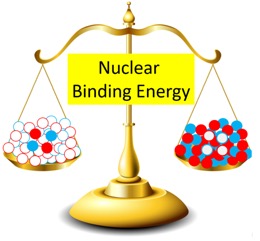In atomic nuclei, protons and neutrons share energy and momentum in tight quarters. But exactly how they share the energy that keeps them bound within the nucleus — and even where they are within the nucleus — remain key puzzles for nuclear scientists.
A new study by researchers at Washington University in St. Louis and Lawrence Livermore National Laboratory (LLNL) in California tackled these questions by leveraging data from nuclear scattering experiments to make stringent constraints on how nucleons (neutrons and protons) arrange themselves in the nucleus. The research appears in two corresponding papers in Physical Review C and Physical Review Letters.
Robert J. Charity, research professor of chemistry, Willem H. Dickhoff, professor of physics, and Lee G. Sobotka, professor of chemistry and of physics, all in Arts & Sciences, are co-authors on the papers led by Cole Pruitt, presently a postdoctoral fellow at LLNL, who earned his PhD at Washington University in 2019. Pruitt completed the majority of the work for these papers as part of his thesis effort.
Their analysis shows that for several cornerstone nuclei, a tiny fraction of the protons and neutrons possess the lion’s share of the overall energy that keeps them bound in nuclei, roughly 50% more than expected from standard theoretical treatments.
Further, the study makes new predictions for the “neutron skin” — a region where extra neutrons pile up — of several neutron-rich nuclei. In turn, these predictions are tightly connected to how large neutron stars grow and what elements are likely synthesized in neutron star mergers.
“Our results quantitatively indicate how asymmetry, charge and shell effects contribute to neutron skin generation and drive a disproportionate share of the total binding energy to the deepest nucleons,” Pruitt said.
Understanding how nuclear asymmetry energy changes with density is an essential input to the neutron equation-of-state, which determines neutron star structure. But it’s not easy to directly measure neutron skins.
“A comprehensive model should not only reproduce integrated quantities (like the charge radius or total binding energy) but also specify how nucleons share momentum and energy, all while being realistic about the model uncertainty of its predictions,” Pruitt said.
“The work reported by Pruitt and collaborators provides a powerful bridge between nuclear physics and astrophysics in the new era of multi-messenger astronomy. The measurement of the neutron skin of several nuclei reported in the letter (Physical Review Letters) could provide stringent constraints on the equation of state of neutron-rich matter, which is a critical ingredient for understanding neutron stars,” said Jorge Piekarewicz, professor of physics at Florida State University, a leading theorist who was not involved in these studies.
